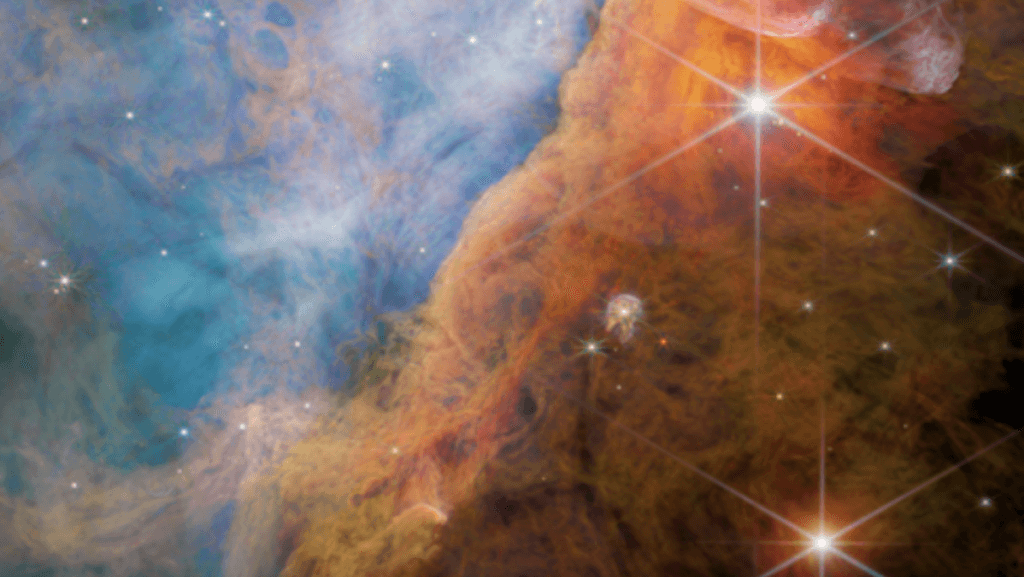Astronomers have detected for the first time in space a carbon molecule thought to be a crucial ingredient for all known life.
A team of scientists found this Holy Grail compound in the Orion Nebula, a baby star nursery about 1,350 light-years away. That may seem absurdly far, but it’s actually the closest large star-forming region to Earth.
Using the James Webb Space Telescope, a preeminent cosmic observatory led by NASA and the European and Canadian space agencies, the researchers not only captured a vibrant new picture of the celestial region — blowing the socks off Hubble’s version — but found the new molecule lurking in a young star system, known as d203-506(opens in a new tab). This system has a protoplanetary disk, a sort of Lazy Susan of gas and dust rotating around the core.
Astronomers are on a quest to find signals of carbon compounds in the greater universe because this chemistry is at the root of all life, at least as far as we understand it on Earth. Coincidentally, ancient Mayan culture referred to the Orion Nebula as the cosmic fire of creation(opens in a new tab).
The mysterious signal turned out to be methyl cation, a molecule that until this week was relatively unknown to the layperson. With the announcement, NASA went so far as to provide a pronunciation guide(opens in a new tab) for the term. (For the record, it sounds like “CAT-eye-on,” not the last two syllables of “vacation.”) Organic chemists say methyl cation assists with the formation of more complex carbon-based molecules.
Since the 1970s, scientists have predicted this substance was a missing link between simple molecules and more complex organic molecules. But direct evidence of its existence in space had eluded them — until now. NASA likens the role of methyl cation to a train station(opens in a new tab), where a molecule can remain for a time before routing in one of many different directions to react with other molecules.
“This detection not only validates the incredible sensitivity of Webb but also confirms the postulated central importance of (methyl cation) in interstellar chemistry,” said Marie-Aline Martin-Drumel, one of the coauthors on the new study, in a statement(opens in a new tab).

Credit: ESA / Webb / NASA / CSA / M. Zamani (ESA/Webb) / PDRs4ALL ERS Team
The discovery was published(opens in a new tab) in the journal Nature on Monday, June 26, 2023.
Want more science and tech news delivered straight to your inbox? Sign up for Mashable’s Light Speed newsletter today.
NASA likens the role of methyl cation to a train station, where a molecule can remain for a time before routing in one of many different directions to react with other molecules.
The molecule was found in an enormous cloud of dust and gas that hosts a multitude of stars under construction. At its center are four massive stars collectively known as the Trapezium(opens in a new tab) because they are arranged in a trapezoidal shape. The molecule, which was detected around a small red dwarf star, comes from a region with high levels of ultraviolet light from the Trapezium.
Scientists speculate that most planet-forming disks experience intense ultraviolet radiation for a time, because stars tend to form in groups that include massive UV-producing stars. The odd plot twist, however, is that UV radiation tends to destroy complex organic molecules. The research team thinks in this instance the radiation might be what’s providing the needed energy for it to form.
Despite finding this key molecule for life, the team noted the absence of another more well-known ingredient from the star system: water. This leaves more questions about ultraviolet radiation for astronomers, said Olivier Berné, lead author of the study, in a statement.
“It might actually play a critical role in the early chemical stages of the origins of life,” he said.

